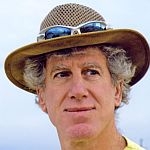 (Host) For a wild and wondrous birding adventure, naturalist and
(Host) For a wild and wondrous birding adventure, naturalist and
commentator Ted Levin says to grab your binoculars and jacket – and head for Boston.
(Levin) A friend of mine lives in Boston’s Arlington
Heights, not far from Mass. Ave., in a house on a hill, with large oaks
and hemlocks in the back yard and shrubs in the front yard. His
neighborhood attracts songbirds and squirrels, including a few albinos.
The birds and squirrels support a family of red-tailed hawks that also
make their home in this canyon of houses. Joe says that one morning last
summer, a redtail flew past his porch with a struggling crow in its
talons.
But Joe’s neighborhood is by no means unique. Birds are
everywhere in and around Boston. And they’re plentiful now, on the down
side of winter. In fact, it’s prime time there to see some otherwise
elusive birds like Arctic-breeding owls and winter finches.
So here are a few of my favorite places to explore the surprisingly rich world of urban birds, the next time you’re in Boston.
I
like to begin at Mount Auburn Cemetery, Cambridge. I park on Harvard
Hill by a stand of Japanese yew. While black-capped chickadees and
red-breasted nuthatches busy themselves in the yew, I hear the call
notes of pine siskins and white-winged crossbills as they pass high
overhead. A great horned owl roosts across a wooded ravine, and in a
tree above a small pond, blue jays hurl invective at a pair of redtails.
My
next stop is The Arnold Arboretum, in Boston proper. In the sky, just
beyond the South Gate Entrance, I spot a pair of red-tailed hawks; in a
holly, a flock of robins; also fox sparrows, dark-eyed juncos, and a
cardinal. On a hill, off the main path, in a cluster of tall white pines
laden with cones, red crossbills and white-winged crossbills gorge on
pine seeds. As their name implies, crossbill mandibles overlap at the
tip, the perfect adaptation for tweezering seeds from an evergreen cone.
Across the street from the entrance, there’s a jubilee of
birds, including golden- and ruby-crowned kinglets, red-bellied
woodpeckers, and a hermit thrush.
My third and final stop is
Belle Isle Marsh Reservation, East Boston, where there are more jets
aloft than birds. But the marsh is a haven for sandpipers and plovers.
They gather on the mudflats like so many disenfranchised sailors. And
there are dunlins and greater yellowlegs, semi-palmated plovers and
black-bellied plovers. The birds of the day, however, are not
shorebirds. They’re white-winged crossbills. Glowing in the late
afternoon light, a pair perch at eye level in a gnarled pitch pine,
plucking seeds from between the scales of pine cones. At one point, I’m
on my knees watching, both crossbills barely a foot away.
Urban
birds are where you find them, and Boston has parks and cemeteries to
attract them. They impart a sense of wonder to the urban landscape, a
sense we more often associate with the hills and valleys of Vermont.